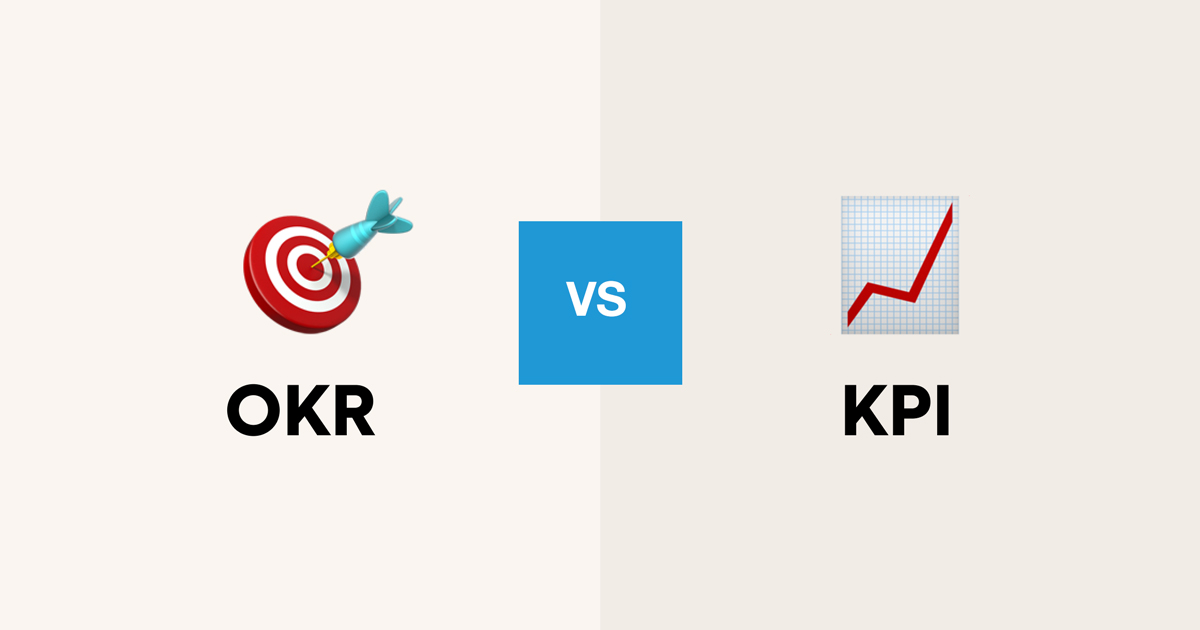OKRs and KPIs are two ways to keep tabs on how a company is doing. OKRs, or Objectives and Key Results, is a goal-setting system from the 1970s. It involves setting a clear goal and then measuring progress with specific results. On the other hand, KPIs, or Key Performance Indicators, are metrics that show how well a business is performing overall.
So, what’s the real difference between the two? If you’re wondering if you need both, we’ve got you covered. Let’s break down what OKRs and KPIs are all about.
What Are KPIs?
KPIs, or Key Performance Indicators, are metrics that show how well a business is doing. They’re used to assess the performance of projects, products, or even individual employees. Think of KPIs as a snapshot of past performance—they tell you how things have been going over a certain period.
While KPIs are great for measuring success, they’re just standalone numbers. They can tell you if something’s working or not, but they don’t provide much context or guidance on what to do next.

What Are OKRs?
OKRs, which stands for Objectives and Key Results, are a goal-setting framework that helps link strategy to execution and ensures everyone is working towards the same goals. OKRs are useful at both the organizational and team levels.
OKRs provide the context and direction that KPIs lack. Objectives define what you want to achieve, and Key Results show how you’ll measure progress towards those objectives. Unlike KPIs, OKRs are more forward-looking—they’re about where you want to go and the impact you want to make in the future.
OKR vs. KPI
OKRs (Objectives and Key Results) are all about leading the way. They clarify what you want to accomplish and how you’ll get there. Objectives are your goals, and Key Results are the steps you’ll take to achieve them.
KPIs (Key Performance Indicators), on the other hand, are standalone metrics. They show how well something is performing but don’t provide direction or context. While KPIs keep track of the current state of things, OKRs push your company to make strategic progress.
Creating OKRs is a team effort. Everyone gets involved, giving feedback and setting team-level OKRs that align with the organization’s goals. KPIs, however, are usually set by management as predefined metrics. In agile organizations, though, there’s more collaboration to ensure KPIs measure the right things.
OKRs are often re-evaluated to stay in sync with market changes, whereas the same KPIs might be used quarter after quarter. Think of KPIs as benchmarks to answer, “Did we hit our targets or not?”
How Can OKRs and KPIs Work Together?
Wondering whether to use OKRs or KPIs? You’re not alone! OKRs are all about setting goals, while KPIs are metrics. When used together, they complement each other beautifully.
Take this example: your company wants to keep its patient registration platform running 99% of the time. This uptime percentage is a KPI—an important metric to track. KPIs are crucial for business health but they don’t drive major changes or open new opportunities. They’re more about maintaining the status quo.
Sometimes, though, a KPI can become an OKR when you want to improve it. If your registration portal is only up 50% of the time, and your Objective is to “create an excellent patient registration platform,” a Key Result could be improving uptime from 50% to 99%. Here, the KPI (uptime) is part of the OKR because it reflects a significant improvement goal.
So, if you consistently hit a Key Result, it can turn into a KPI, showing ongoing business health. This way, new KPIs indicate that your business is doing well and can help guide future goals.

Why Is It Important to Measure Performance?
Measuring and reviewing performance is essential for improvement. Without setting and reviewing objectives, you miss out on learning opportunities. Performance metrics allow you to learn from both successes and failures, helping you and your team reach your goals faster and improve overall efficiency.
Why Is It Important to Use Both OKRs and KPIs?
Using both OKRs and KPIs is crucial because they serve different yet complementary purposes. OKRs help you set and track progress toward strategic goals, providing a directional framework. KPIs measure performance against specific targets, giving you quantitative insights.
Together, they ensure that you’re not only tracking progress toward your objectives but also hitting performance benchmarks. This dual approach helps you monitor and enhance your organization’s performance effectively.